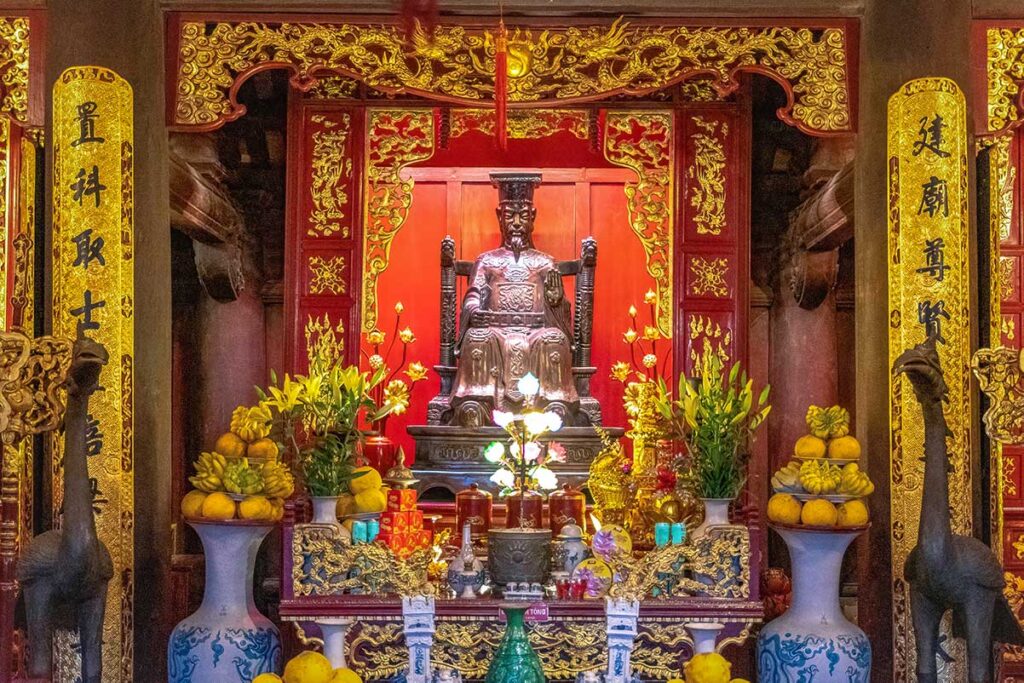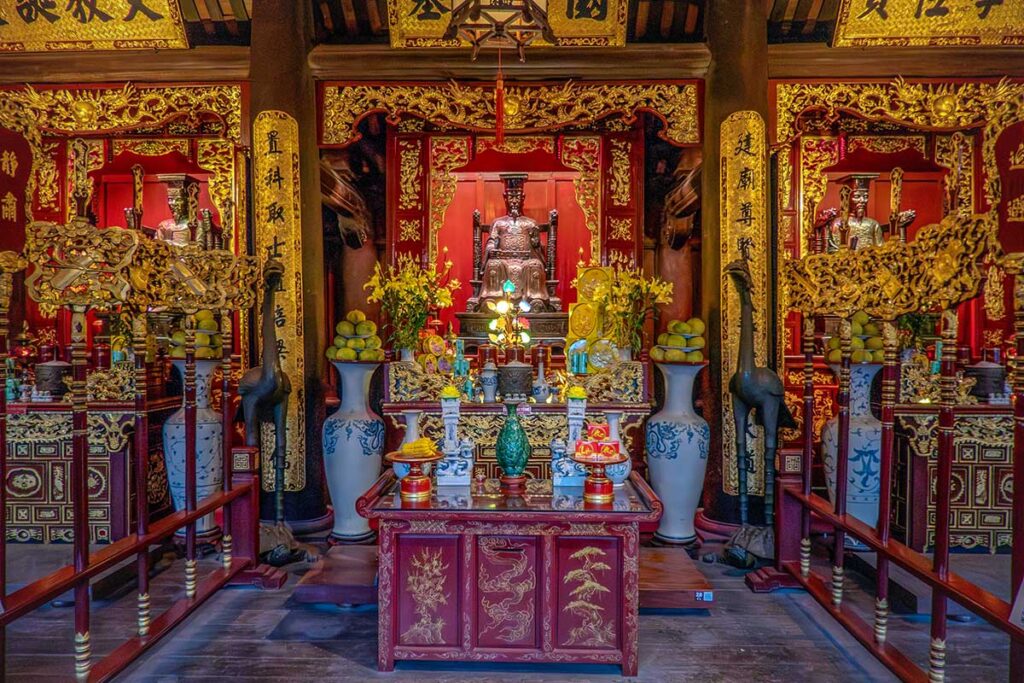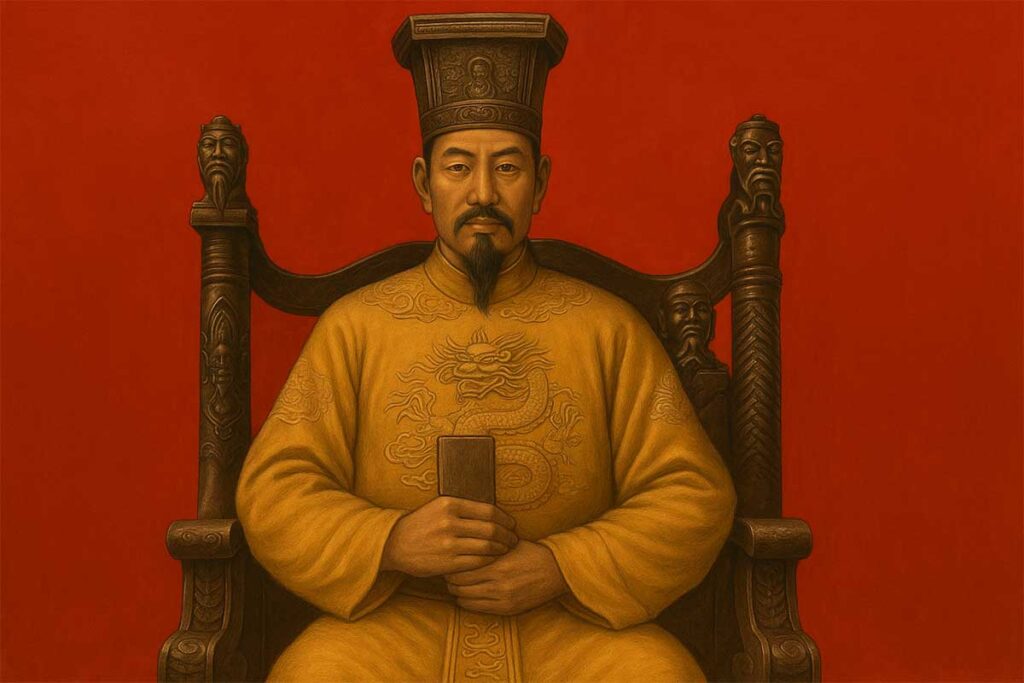Who was Lê Thánh Tông?

Lê Thánh Tông was the fifth emperor of the Later Lê dynasty and ruled Đại Việt for nearly four decades, from 1460 to 1497. He is best remembered for introducing wide-ranging reforms in government, law, and education that transformed the kingdom into a more centralized and orderly state. Under his leadership, Đại Việt expanded its territory southward after the decisive defeat of Champa in 1471, while culture and scholarship flourished in what is often called Vietnam’s “Golden Age.” For these achievements, historians consistently rank him among the greatest rulers in Vietnamese history.
Vietnam during his time
When Lê Thánh Tông came to power in 1460, Đại Việt was under the Later Lê dynasty but had been weakened by court intrigues and short, unstable reigns. His accession ended years of power struggles within the royal family and marked the beginning of a long period of stability.
Regionally, Đại Việt was surrounded by strong neighbors. To the south, the Cham kingdom had long been both a rival and a threat, while to the west, Laos and Burma controlled important trade and influence networks among Tai peoples. Relations with Ming China were delicate: Đại Việt remained a formal tributary but carefully defended its independence. The balance of power in the region shifted dramatically during his reign, especially after the conquest of Champa in 1471.
Within the kingdom, society was reshaped by Confucian values. The aristocratic families who had dominated politics were gradually replaced by scholar-officials chosen through examinations, giving rise to a more merit-based system of governance. This transformation, together with territorial expansion and cultural growth, is why historians see Lê Thánh Tông’s reign as a turning point and the beginning of Vietnam’s so-called “Golden Age.”
Key events in Lê Thánh Tông’s life
Early life and education
Lê Thánh Tông was born in 1442 as the fourth son of Emperor Lê Thái Tông. Legend says his mother dreamt of being visited by a heavenly child before conceiving him, a sign of future greatness. He was raised in the royal palace of Đông Kinh (Hanoi today), where he studied Confucian classics and impressed tutors with his intelligence and discipline.
Rise to power
In 1459, his half-brother Lê Nghi Dân staged a coup and killed the young emperor Lê Nhân Tông. Just nine months later, loyalist generals Nguyễn Xí and Đinh Liệt overthrew Nghi Dân and turned to Prince Tư Thành (later Lê Thánh Tông) as a capable new ruler. He accepted, becoming emperor at the age of 18 and quickly worked to restore order in the troubled court.
Bureaucratic and legal reforms
Once in power, he reorganized government along Confucian lines, replacing aristocratic dominance with trained scholar-officials. A nationwide census and land survey were completed in 1469, and the country was divided into 13 provinces for more effective rule. His most enduring achievement was the Hồng Đức Code (1483), a legal system combining Chinese influence with Vietnamese traditions, including stronger inheritance rights for women.
Military campaigns
Lê Thánh Tông expanded Đại Việt’s territory and influence. His most famous campaign came in 1471, when his army crushed Champa, ending the kingdom’s centuries-long rivalry with Đại Việt. He also launched a massive invasion of Laos in 1479, briefly pushing as far as Luang Prabang before overextension forced a retreat. These campaigns secured Vietnam’s position as a major regional power, though relations with Ming China remained tense.
Culture and Education
The emperor was as much a scholar as a warrior. He promoted Confucian education, built temples of literature across the provinces, and personally wrote poetry. He founded the Tao Đàn literary society, gathering scholars and poets at court, and supported the compilation of the Đại Việt sử ký toàn thư, the most comprehensive history of Vietnam at the time. His patronage created a cultural flourishing that shaped Vietnamese identity for centuries.
Later years and death
In his later years, Lê Thánh Tông continued refining laws, strengthening the bureaucracy, and promoting scholarship. He died in 1497 after 37 years on the throne, leaving behind a stable and prosperous kingdom. His reign is often seen as the high point of premodern Vietnam, remembered as a model of strong leadership, cultural vitality, and good governance.
Lê Thánh Tông in Vietnam today
Monuments and Memorials
Across Vietnam, you’ll find Lê Thánh Tông’s name on statues, schools, and major streets. In Hanoi and Ho Chi Minh City, central avenues bear his name, reflecting his lasting reputation as one of the nation’s greatest emperors. Some universities and high schools are also named after him, keeping his role as a scholar-king alive in public memory.
Museums and Historical Sites

Travelers can encounter his legacy in several cultural landmarks. The Vietnam National Museum of History in Hanoi features displays on his reign, including artifacts from the Hồng Đức era. At the Temple of Literature, the country’s first university that he expanded and promoted, visitors can connect directly with his reforms in education and Confucian learning. In Hue, the Imperial City also contains references to his dynasty, even though it became the capital much later.
Festivals and Cultural References
While there are no nationwide festivals dedicated solely to Lê Thánh Tông, his name appears in local ceremonies, especially those tied to Confucian scholarship and temple commemorations. Literary circles still recognize him as a patron of poetry, and his works are occasionally cited in cultural events celebrating Vietnam’s classical heritage.
Education
Lê Thánh Tông plays a central role in national education. Students learn about him early in school, often as the emperor who brought Vietnam into its “Golden Age.” His reforms, poetry, and military victories are standard parts of history textbooks, ensuring that nearly every Vietnamese child grows up familiar with his name and achievements.
Other famous Emperors of Vietnam
Lê Thánh Tông is often ranked among the greatest rulers in Vietnamese history, but he is not the only figure who left a deep mark on the nation’s past. To put his reign into perspective, here are a few other leaders and heroes who shaped Vietnam:
- Lý Thái Tổ (r. 1009–1028) – Founder of the Lý dynasty and the emperor who moved the capital to Thăng Long (modern-day Hanoi), laying the foundation for the city as Vietnam’s political and cultural heart.
- Trần Hưng Đạo (1228–1300) – A prince and general, remembered as Vietnam’s most celebrated military hero. He led the Trần dynasty armies to victory against the Mongol invasions in the 13th century.
- Lê Lợi (1385–1433) – Leader of the Lam Sơn uprising that ended Chinese Ming occupation, and founder of the Later Lê dynasty, which gave rise to Vietnam’s longest-lasting royal line.
- Gia Long (r. 1802–1820) – Founder of the Nguyễn dynasty, he reunified Vietnam after centuries of division and established Hue as the imperial capital.
- Minh Mạng (r. 1820–1841) – A powerful Nguyễn emperor known for administrative reforms, cultural consolidation, and expanding Vietnamese influence across the region.



